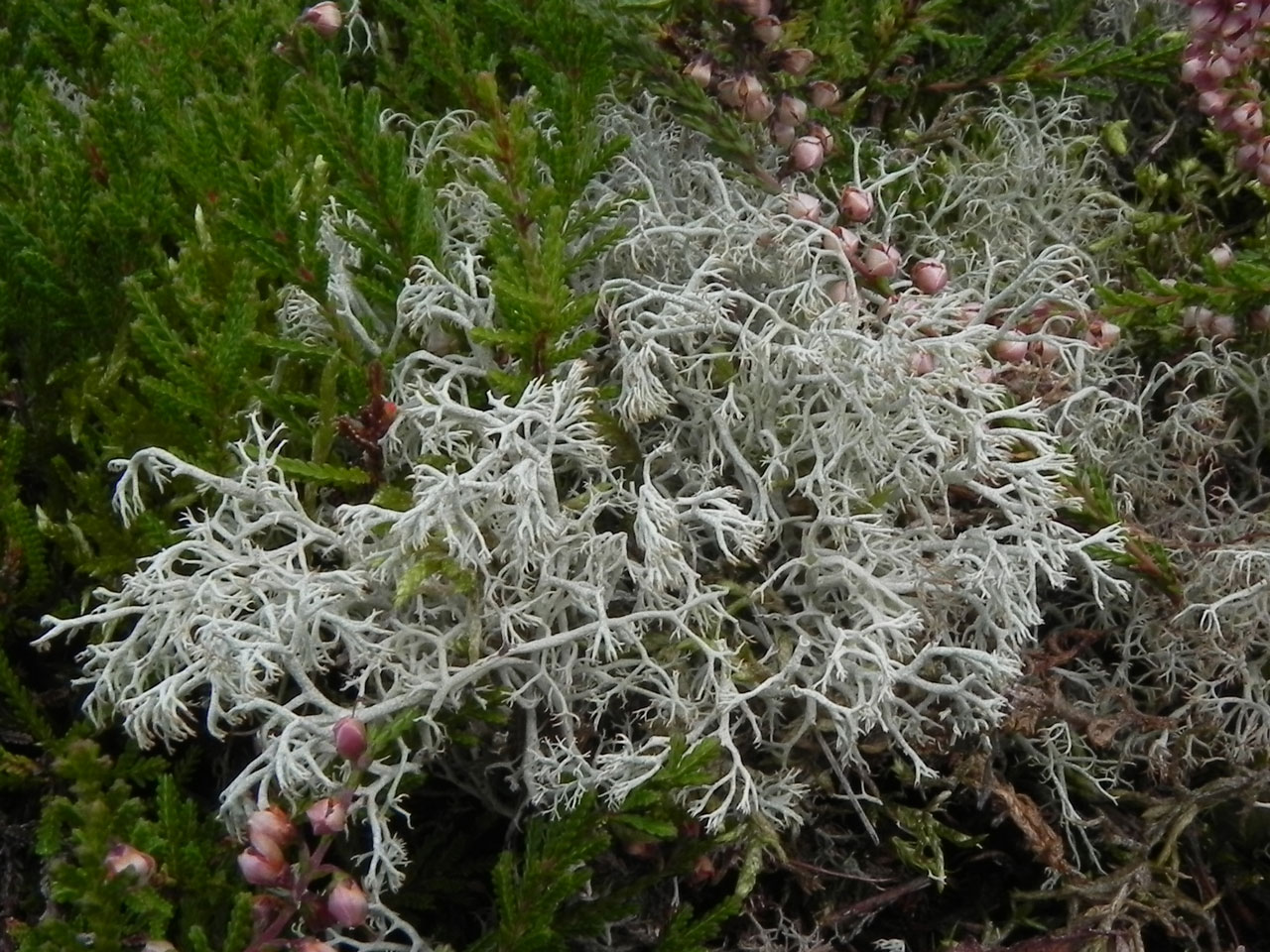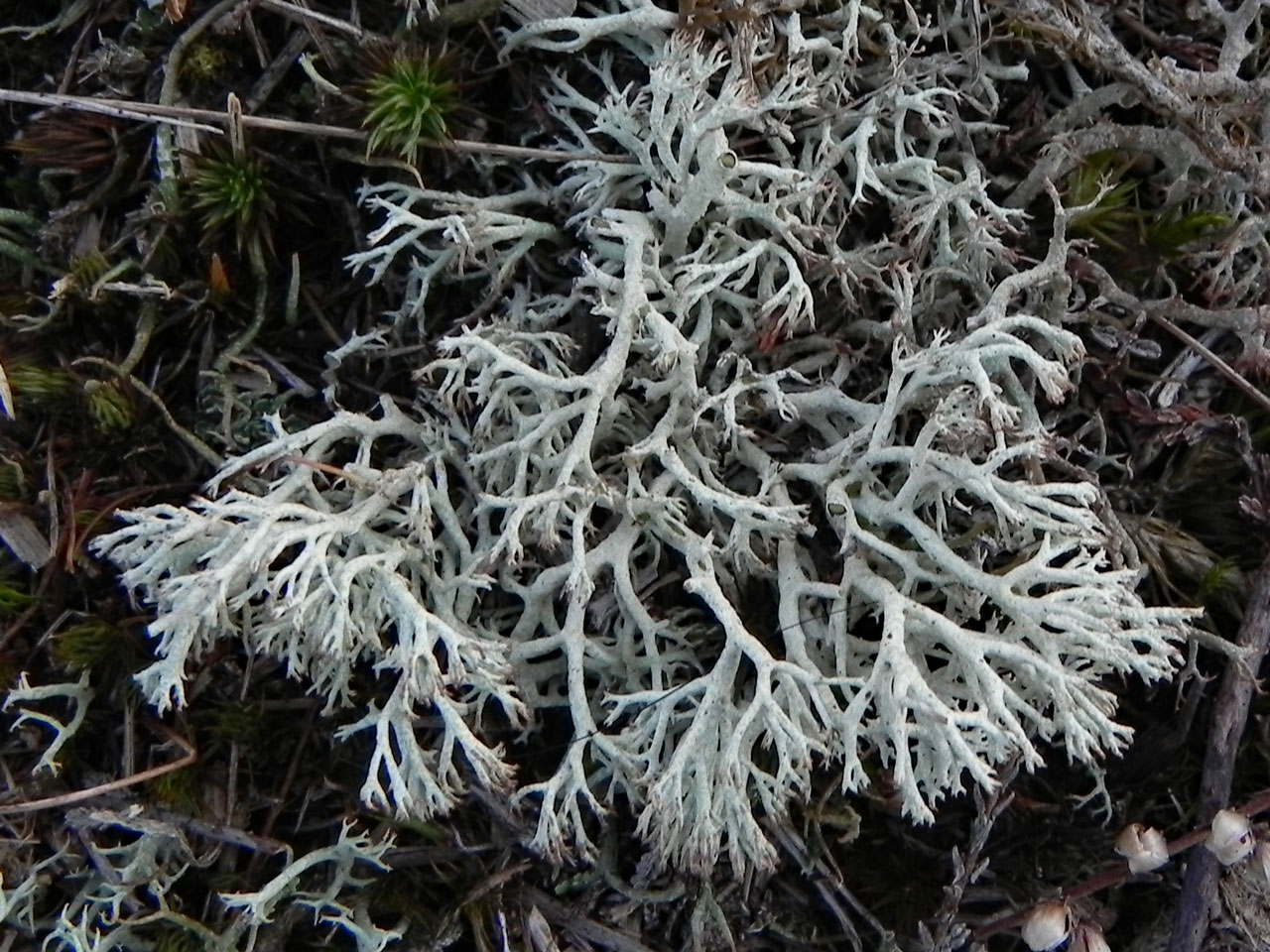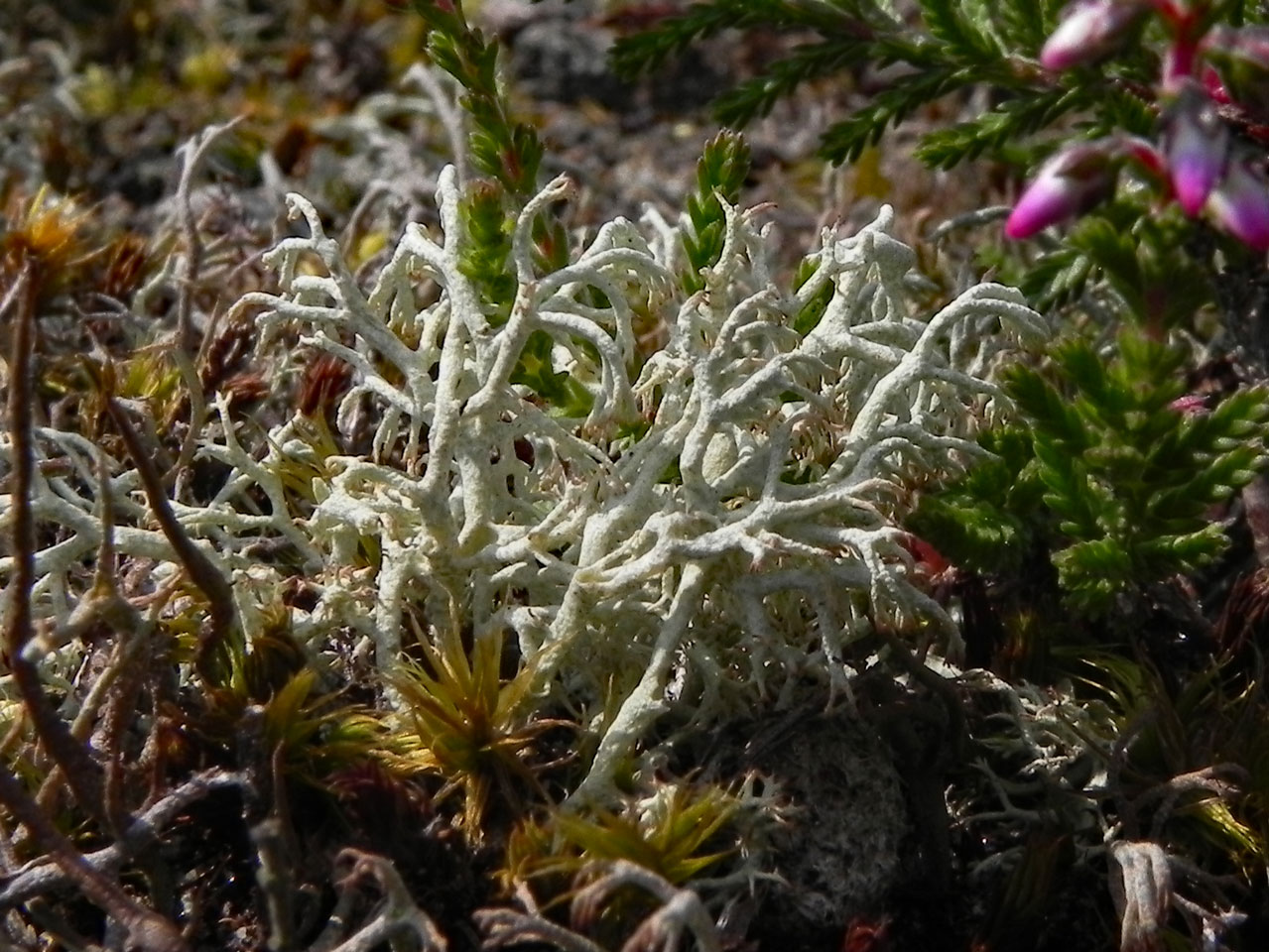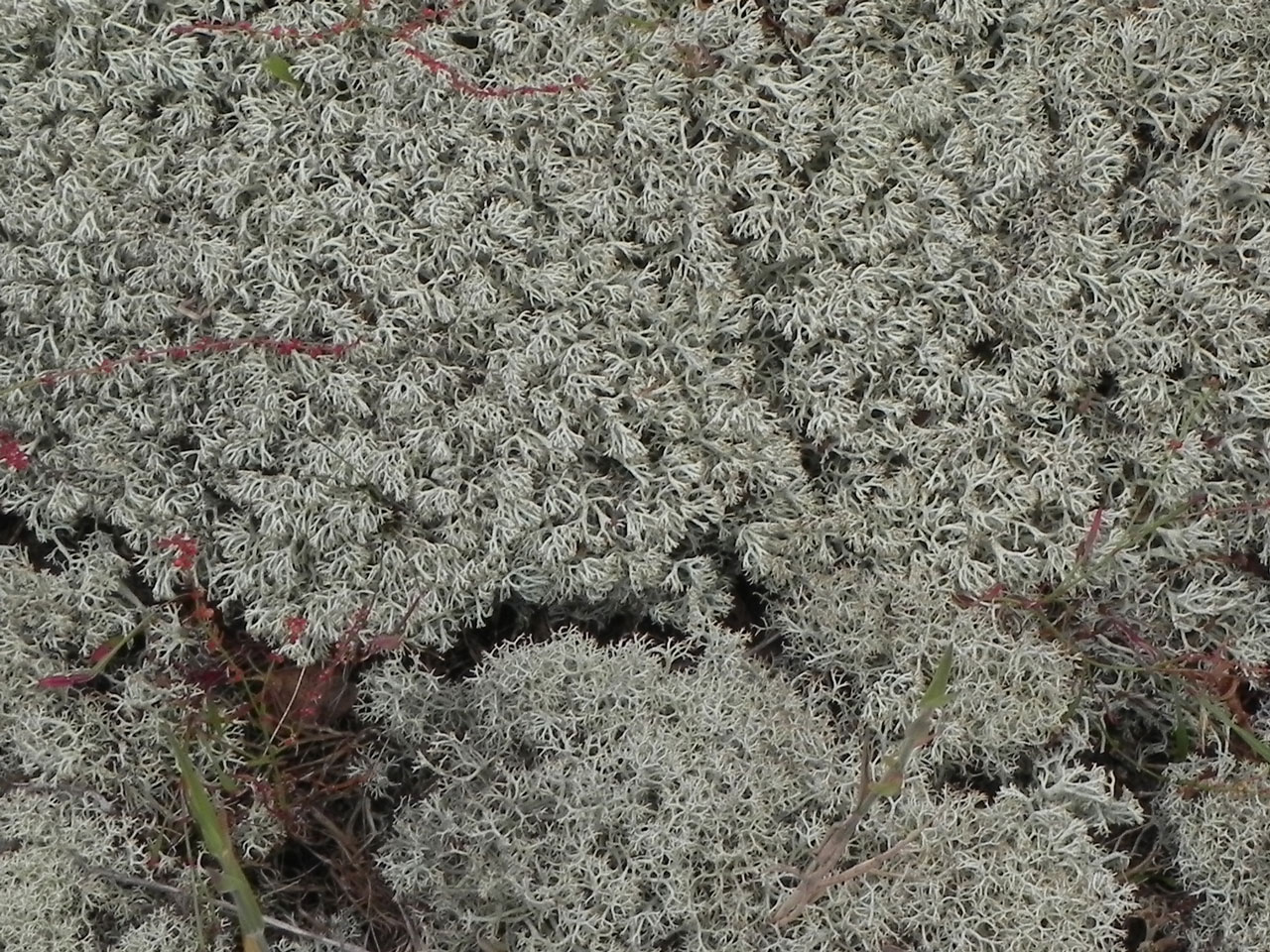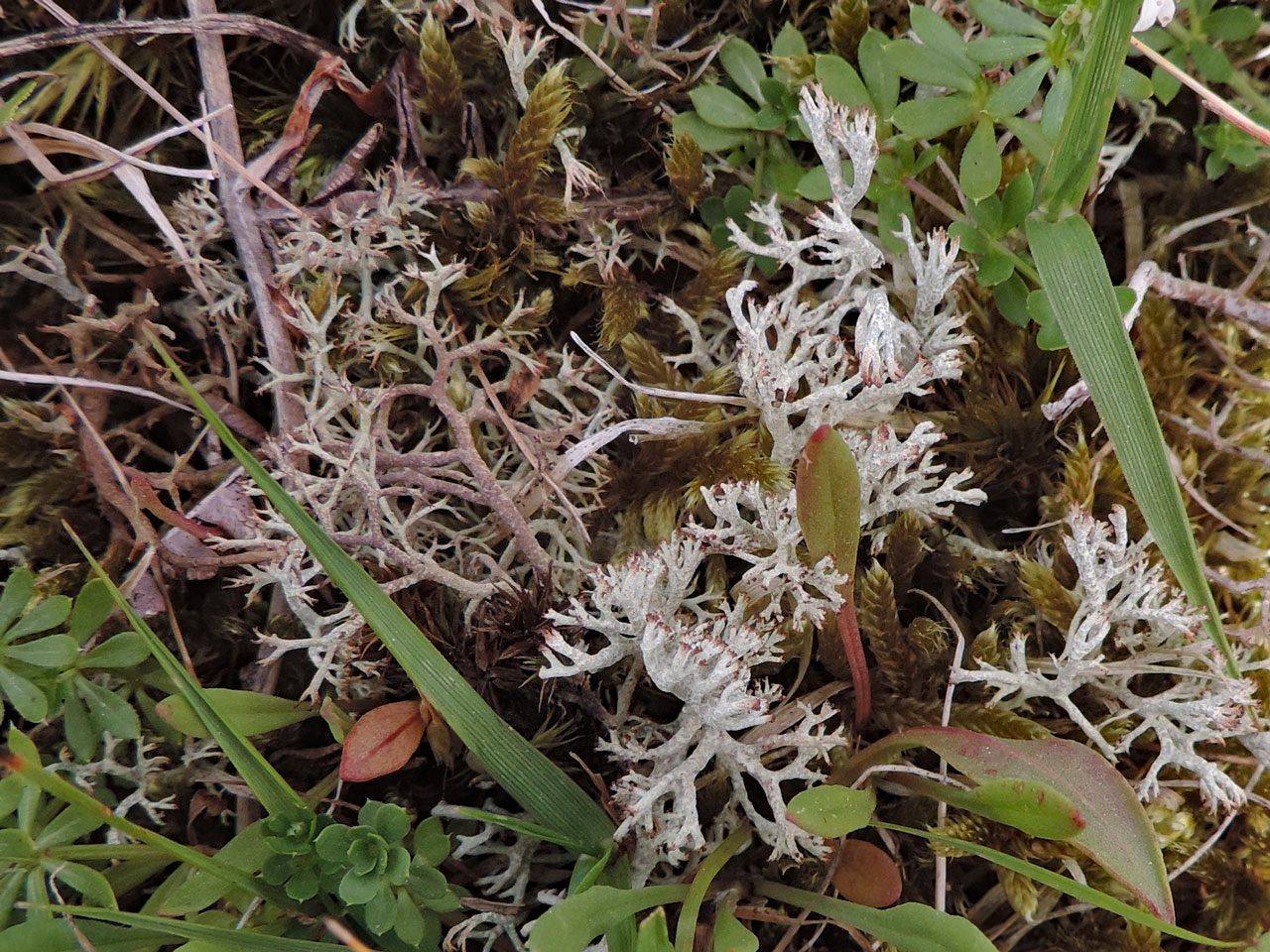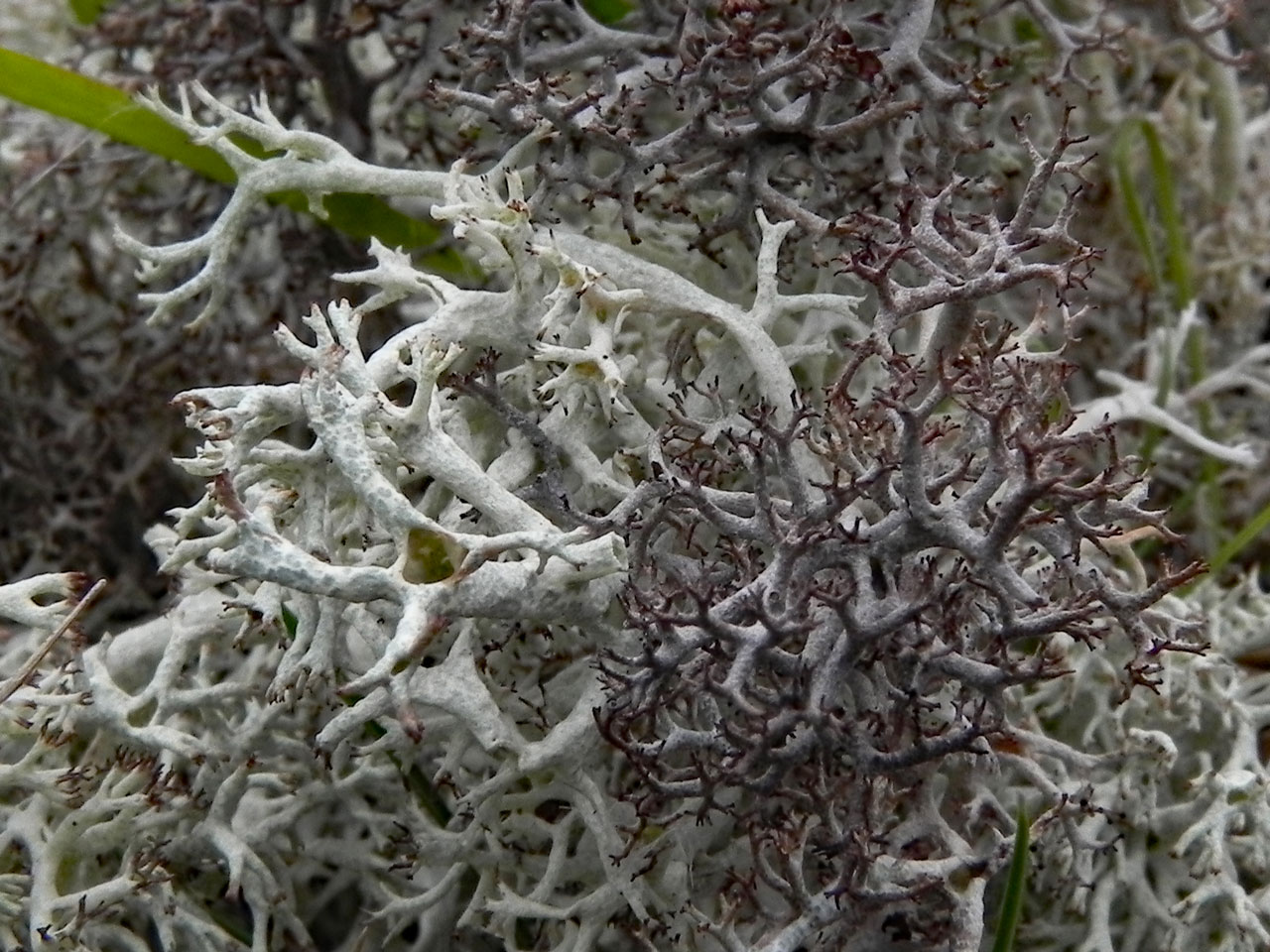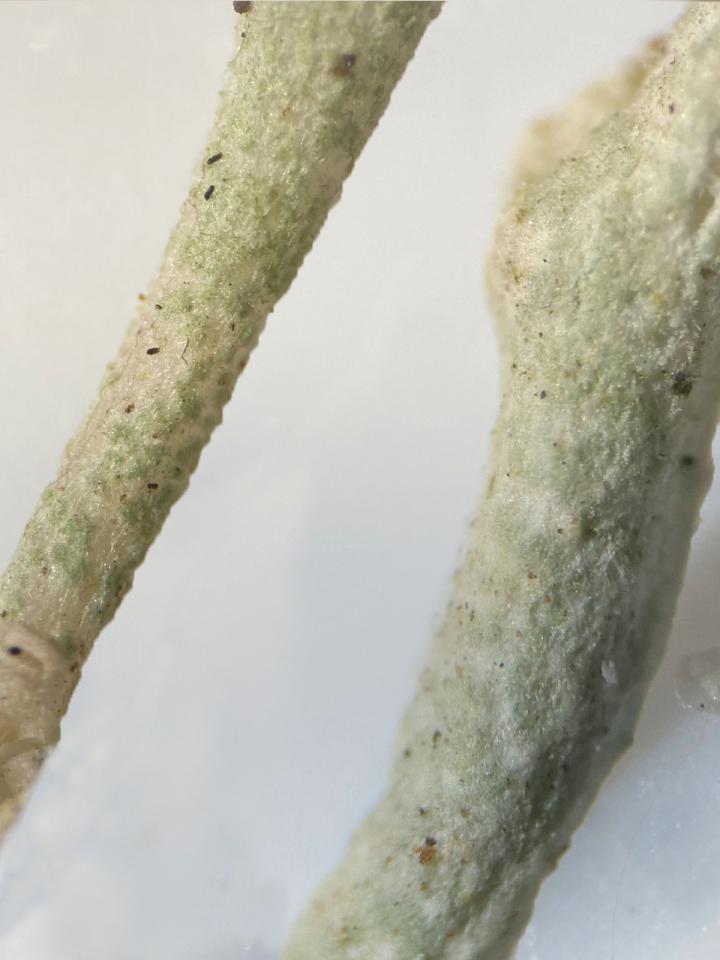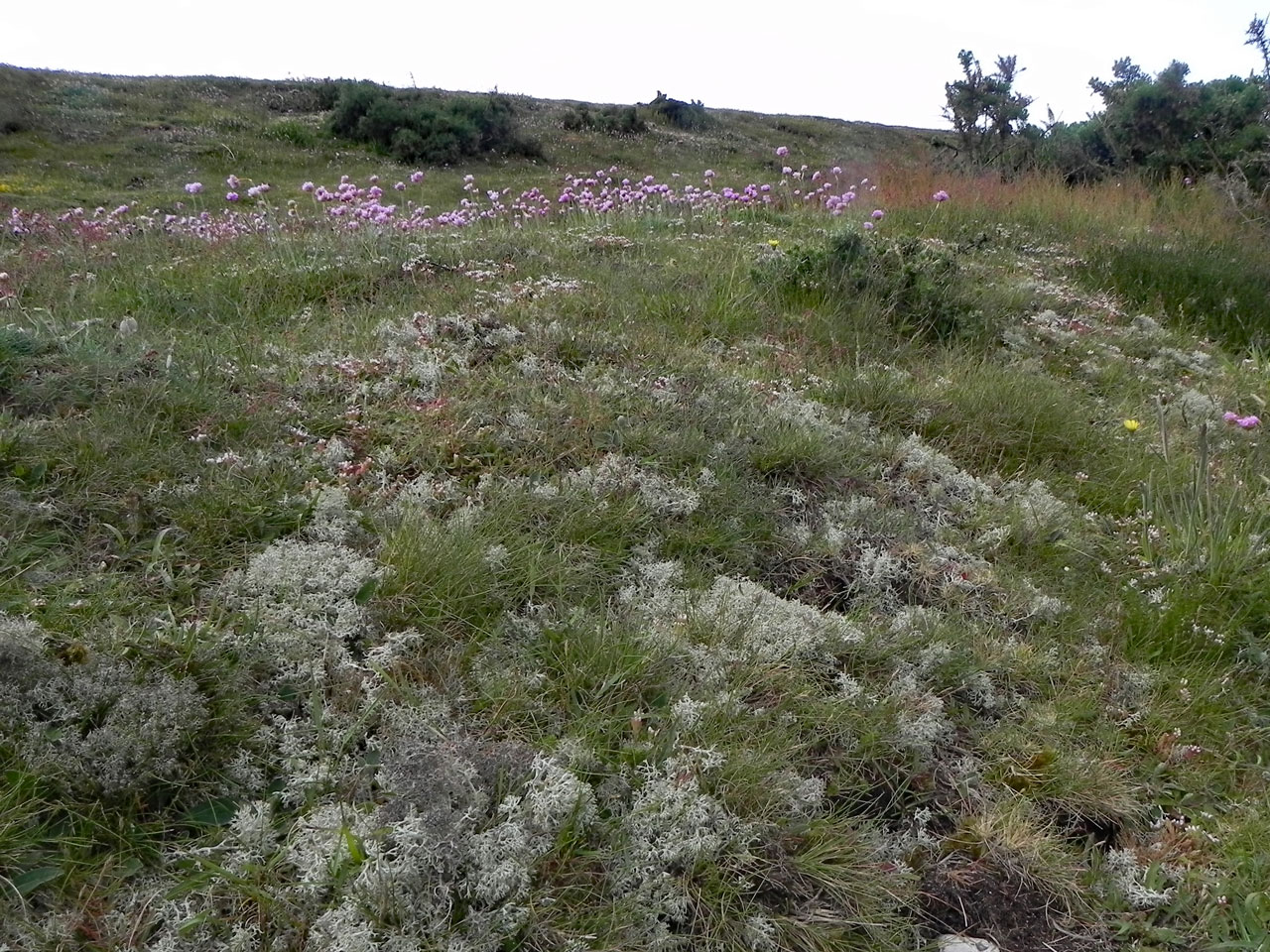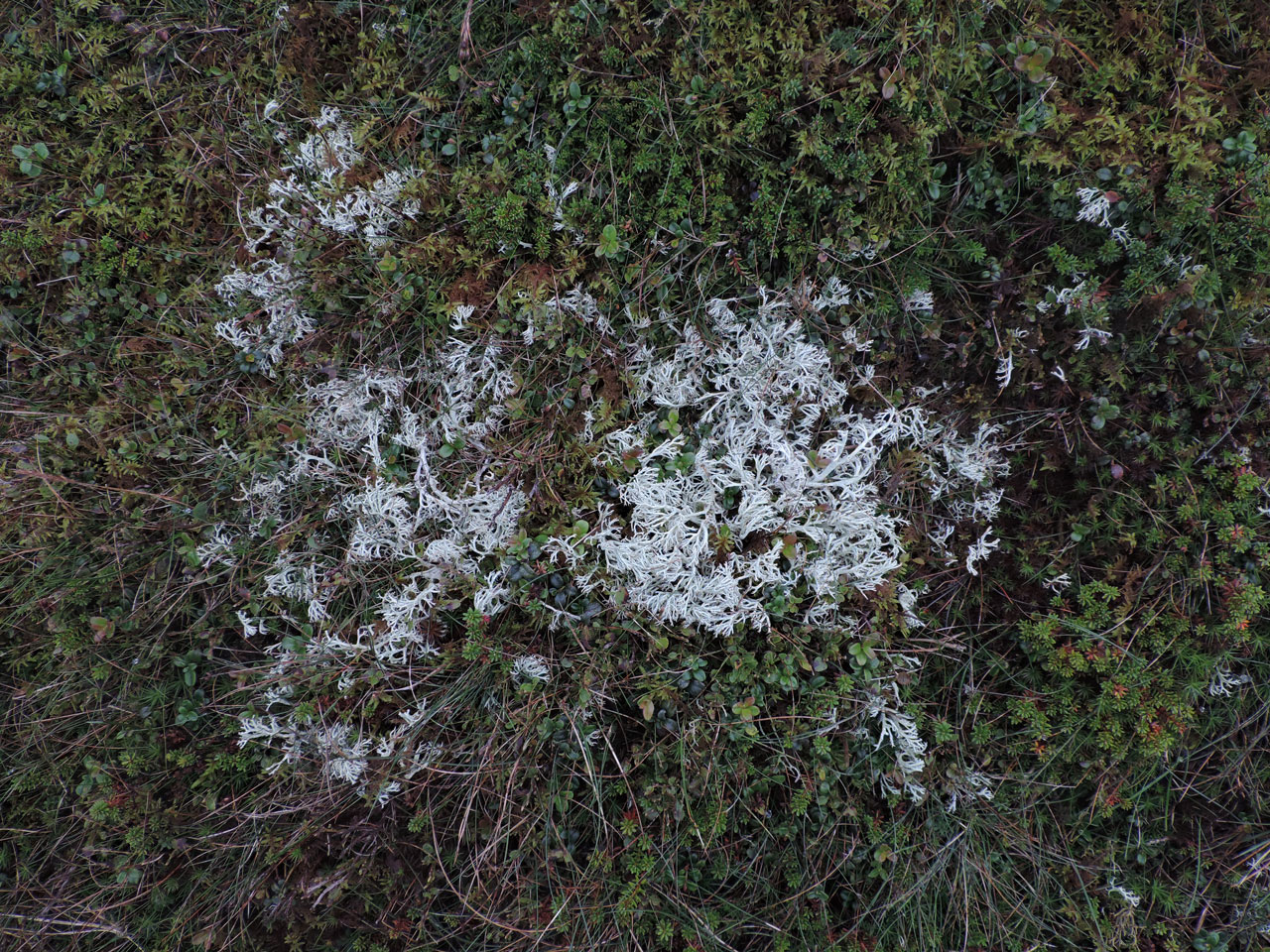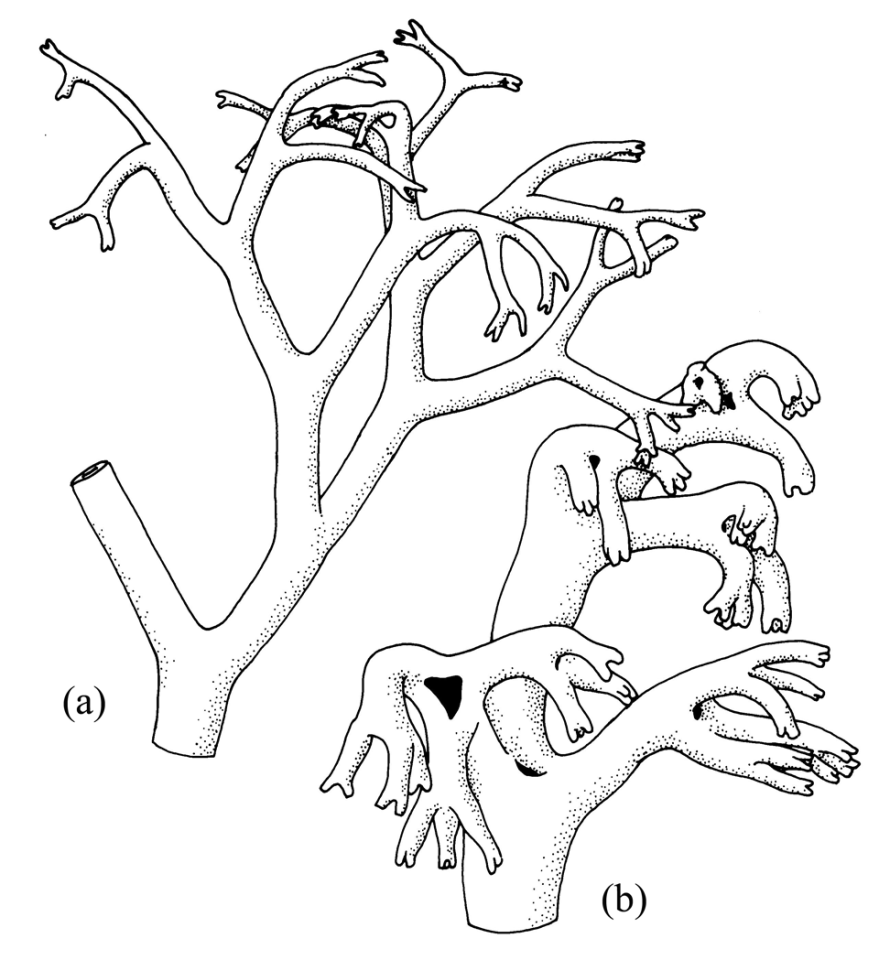Cladonia arbuscula subsp. squarrosa
Cladonia arbuscula p.max.p.
Cladonia sylvatica auct. p.p.
A magnificent robust Reindeermoss, with distinct silvery colour when dry, with the branches notably recurved and markedly orientated in one direction and branched predominantly trichotomous or tetrachotomous at the apices. Quite distinct from the commoner Cladonia portentosa, once learned, but most easily separated by the lack the bright UV fluorescence found at the base of Cladonia portentosa. Cladonia ciliata var. tenuis is similar coloured and the thalli are also markedly orientated in one direction but the thallus is finer and it branches mainly in twos. The rare and closely related C. mitis, is mainly separated on chemistry but it does have some subtle morphological differences. A species of high quality habitat, which is declining in the lowlands and is threatened in some areas.
Primary thallus crustose, evanescent. Podetia 4–10 cm tall, yellow-green, richly branched, surface ± uneven- roughened; terminal branches notably recurved and markedly orientated in one direction, branching predominantly trichotomous or tetrachotomous at the apices; young apices <2 mm diam., blunt. Apothecia brown, inconspicuous, rather rare. Pycnidial jelly colourless. Thallus C–, K–, KC+ yellow, Pd+ rust-red (fumarprotocetraric and usnic acids) or rarely Pd+ yellow (psoromic and usnic acids) (see Cladonia arbuscula subsp. arbuscula), UV–.
Characterised by the richly branched, yellow-green podetia, slivery when dry due to the less broken contex, with recurved branchlets with tri- and tetrachotomous endings. The similarly coloured Cladonia portentosa (Impexae clade) has terminal branchlets which are either not recurved, or are somewhat recurved, but diverge in all directions forming broccoli-like tufts. The more broken cortex of Cladonia portentosa also gives a greener tinge when dry and this can be distinctly different at a distance of several meters in the right conditions. The bright UV fluorescence at the base of C. portentosa is especially useful for rapid separation from C. arbuscula.
Cladonia ciliata (Crustaceae clade) with usnic acid (Cladonia ciliata var. tenuis) differs in the dichotomous branching, and more slender, strongly recurved branchlets. The rare and closely related C. mitis, is very similar and is best separated by the chemistry, containing rangiformic (usually), usnic and, very rarely, also fumarprotocetraric acid, but is also slenderer, with the branchlets less recurved.
In montane and lowland heathlands and acid dunes, on nutrient-poor and often ± boggy soils, rather local. The fire tolerance off this species is lower that of Cladonia portentosa or Cladonia ciliata, but it regenerates well after controlled burns on wetter soils (Sanderson, 2017). In drier situations it is most abundant in either short unburnable vegetation or fire refugias. Requires open well lit vegetation and is not tolerant of tall shading vegetation.

Throughout Britain and Ireland, but rare in C. & E. England and there decreasing due to the loss of suitable habitats and overall eutrophication.
Still locally abundant in the uplands but seriously threatened and declining in large areas of lowland England, due to habitat loss and vegetation over growth with under management. In addition, it may be slow to recover when management is restored (Cross & Sanderson, 2021).
Cross, A. M. & Sanderson, N. A. (2021) Ashdown Forest SSSI: Site Dossier and Common Standards Monitoring of Heathland Lichen Assemblage. A Botanical Survey & Assessment report to Natural England.
Pino-Bodas, R., Sanderson, N., Cannon, P., Aptroot, A., Coppins, B., Orange, A. & Simkin, J. (2021). Lecanorales: Cladoniaceae, including the genera Cladonia, Pilophorus and Pycnothelia. Revisions of British and Irish Lichens 19: 1-45. Link
Sanderson, N. A. (2017) The New Forest Heathland Lichen Survey 2011 – 2015. A report by Botanical Survey & Assessment to Natural England, Forest Enterprise & The National Trust. Link
Text by Neil A Sanderson based on Pino-Bodas et al (2012)
